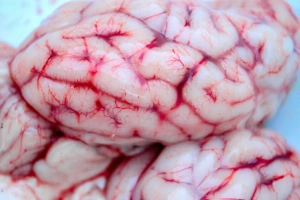The Psychology Symbol Guide: A Visual Journey Through Mental Wellness
Introduction
In our rapidly evolving world, mental wellness has emerged as an essential element of holistic health. As we navigate the complexities of daily life, symbols and visual representations often serve as effective tools for understanding and communicating mental health concepts. This article provides a comprehensive guide to the significant symbols related to mental wellness, illuminating their meanings, historical contexts, and roles in modern psychological practices.
Understanding Mental Wellness
Mental wellness refers to a state of well-being in which individuals can cope with the normal stresses of life, work productively, and contribute to their communities. It encompasses various aspects of emotional, psychological, and social health. Factors that influence mental wellness include genetics, environment, lifestyle, and experiences.
The Importance of Symbols in Psychology
Symbols have long played a crucial role in psychology, serving as shorthand for complex concepts and helping individuals connect with their mental health on a deeper level. Carl Jung, a pioneer in the field, emphasized the significance of symbols, believing that they could unlock meanings hidden in the unconscious mind. By exploring various psychological symbols, we gain insight into human behavior, emotional states, and mental health strategies.
Key Psychological Symbols
-
The Tree of Life
The Tree of Life symbolizes interconnectedness, growth, and strength. In psychology, it represents personal development and the holistic nature of well-being, illustrating that individuals grow and thrive best when all aspects of their lives—emotional, physical, social, and spiritual—are nurtured.
Visual representation: The tree with roots, trunk, branches, and leaves signifies the journey of personal growth, where roots represent stability and the trunk represents the strength gained through experiences.
-
The Labyrinth
The labyrinth is a complex symbol that reflects the journey toward self-discovery and mental wellness. Instead of a maze with dead ends, the labyrinth is a single path leading to the center, representing the idea that the journey can be challenging yet ultimately rewarding.
Visual representation: A circular or spiral design that draws the observer into the center, encouraging introspection and mindfulness.
-
The Butterfly
The butterfly symbolizes transformation and resilience, akin to the stages of personal growth and healing. In psychology, it serves as a reminder that change is possible and often beautiful, no matter how daunting it may seem.
Visual representation: A colorful butterfly emerging from a cocoon, symbolizing the full range of human emotions and experiences.
-
The Yin-Yang
The Yin-Yang is an ancient symbol from Chinese philosophy that represents balance and harmony. It illustrates the duality within each person, emphasizing that both positive and negative experiences are essential for mental wellness.
Visual representation: The black and white swirl with dots signifies that each side comprises elements of the other, reinforcing the idea that opposites coexist.
-
The Heart
The heart symbolizes love, compassion, and emotional well-being. In psychology, the heart represents the importance of cultivating positive relationships and emotional literacy as fundamental aspects of mental health.
Visual representation: A simple heart shape, often depicted with radiance or warmth, symbolizes positivity and emotional health.
The Impact of Visual Tools in Therapy
Visual tools, including symbols, play a pivotal role in various therapeutic modalities. Art therapy, cognitive-behavioral therapy (CBT), and mindfulness practices often utilize symbolic imagery to facilitate communication and understanding of emotions. Here’s how visual tools can enhance therapy:
1. Art Therapy
Art therapy introduces the use of visual symbols to help individuals express emotions that are difficult to articulate verbally. Whether through drawing, painting, or sculpting, the creative process allows clients to explore their feelings at a deeper level.
- Example: A client may draw a stormy sky to represent feelings of anxiety, allowing the therapist to guide a discussion about coping mechanisms and emotional regulation.
2. Cognitive-Behavioral Therapy (CBT)
CBT often employs visual aids, such as thought records or diagrams, to help individuals reframe negative thought patterns. Symbols can remind clients of healthier perspectives and coping strategies.
- Example: Visualizing the cognitive triangle, which connects thoughts, behaviors, and emotions, enables clients to see how their perceptions influence their emotional states.
3. Mindfulness Practices
Mindfulness emphasizes being present and aware of one’s thoughts and feelings. Visual symbols, such as mandalas or nature images, can serve as focal points during meditation or mindfulness exercises, aiding concentration and relaxation.
- Example: Using a mandala during meditation allows individuals to focus while embracing their emotions without judgment, contributing to mental clarity.
Exploring Symbols Across Cultures
Mental wellness symbols often vary across cultures, reflecting distinct values, belief systems, and approaches to psychological well-being. Here are some notable examples:
1. Native American Symbols
In Native American cultures, the medicine wheel is a powerful symbol representing the interconnected nature of life, emphasizing physical, emotional, mental, and spiritual aspects of well-being.
- Visual representation: A circle divided into four quadrants, each aligning with a direction, season, and stage of life, embodies the cyclical nature of existence.
2. The Lotus Flower
In Eastern philosophies, particularly in Buddhism and Hinduism, the lotus flower symbolizes purity and spiritual awakening. It serves as a reminder that beauty can emerge from difficult circumstances.
- Visual representation: A blooming lotus rising above murky water represents resilience and transformation.
3. The Spiral
The spiral is a symbol found in various cultures, representing growth, evolution, and the journey inward. It is often associated with the concepts of time and continuous learning.
- Visual representation: A gradual outward spiral, illustrating the ongoing process of self-discovery and personal development.
The Role of Modern Technology in Mental Wellness Symbols
With the arrival of digital media, the visual representation of mental wellness symbols has expanded significantly. Social media platforms, applications, and online resources have integrated symbols into their design and content, enhancing accessibility and understanding of psychological concepts.
1. Social Media Campaigns
Social media has become a powerful medium for advocating mental health awareness. Hashtags, infographics, and visual art promote important messages and symbols, fostering community and reducing stigma related to mental health.
- Example: Campaigns like #MentalHealthAwareness often feature uplifting symbols, such as the semicolon (;) which represents continuation and resilience in the face of mental health challenges.
2. Mobile Applications
Mental wellness apps often incorporate symbols to represent various moods and emotional check-ins. Users can select from a range of symbols to express how they feel, facilitating self-reflection and tracking emotional trends.
- Example: Apps like Moodfit and Daylio utilize visual icons to simplify emotional tracking and promote mindfulness.
3. Online Therapy Platforms
With the rise of teletherapy, visual tools have become essential in virtual sessions. Therapists frequently incorporate symbols and graphics during online sessions, enhancing engagement and understanding.
- Example: Using shared screens to show visual aids, such as diagrams or therapeutic symbols, allows therapists and clients to explore concepts collaboratively.
Conclusion
Symbols offer a meaningful pathway to understanding and nurturing mental wellness. From ancient representations in art and culture to contemporary digital formats, these visual representations serve as powerful tools for communication, self-awareness, and healing. By embracing the symbolism in mental wellness, we can foster a deeper connection with ourselves and others, promoting healthier lives and communities.
References
- [1] American Psychological Association. (2020). Understanding Mental Wellness and Treatment Options.
- [2] National Institute of Mental Health. (2021). Coping with Mental Health Problems: Tips and Tools.
- [3] Jung, C. G. (1974). Man and His Symbols. Garden City, NY: Doubleday.
- [4] Miller, S. J., & Smith, D. A. (2018). Art Therapy: A Visual History. London: Sage Publications.
- [5] Williams, P. (2019). Cognitive-Behavioral Therapy Techniques for Mental Health Practitioners. New York: Routledge.
This article highlights the interconnectedness of symbols and mental wellness, providing a unique perspective on how visual language continues to shape our understanding and experiences in the realm of psychology. As we move forward, the integration of symbols into therapeutic practices and mental health awareness remains crucial for fostering a culture of support and understanding.


























Add Comment